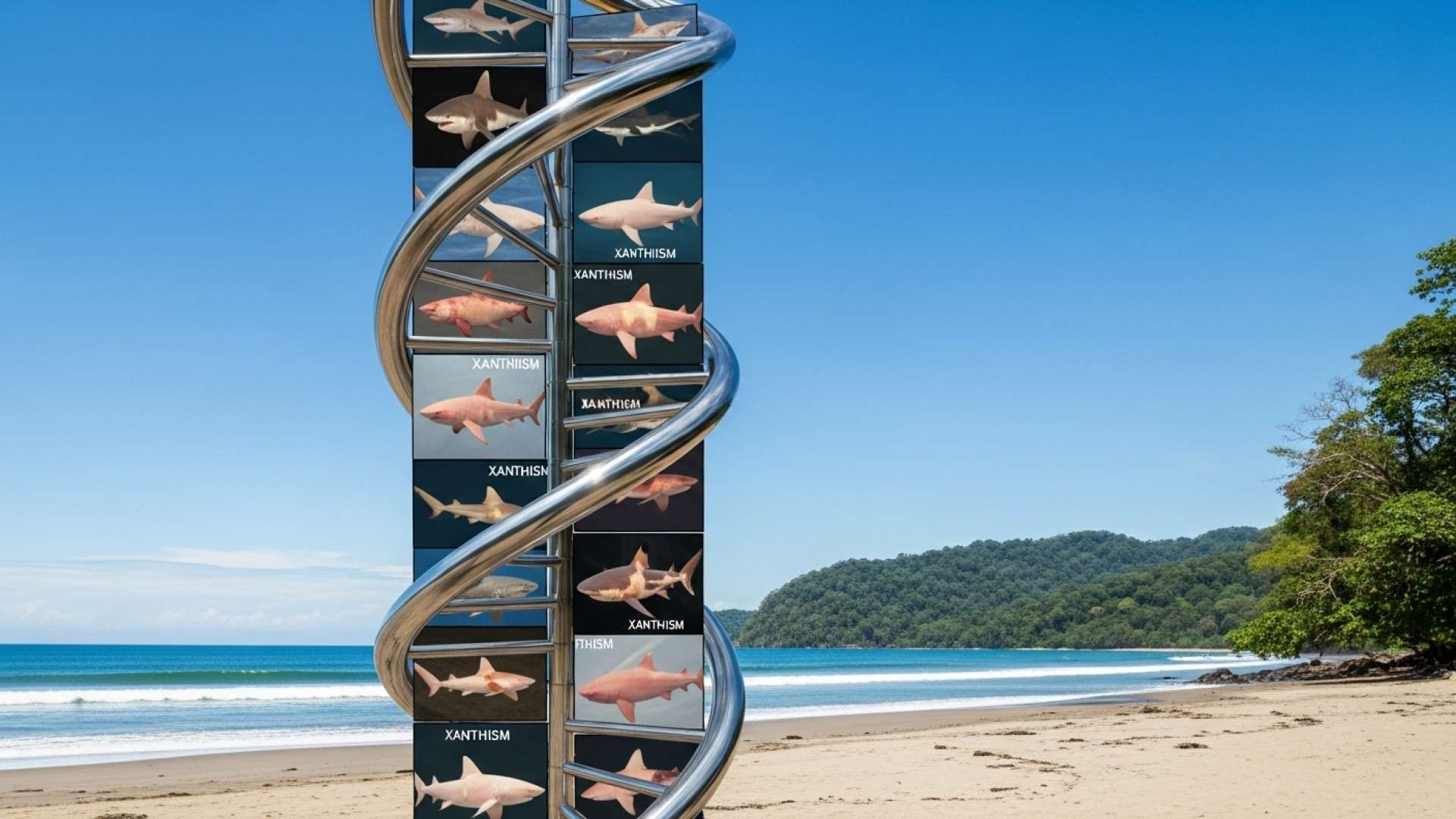Limón, Costa Rica — A rare orange shark, sighted in Costa Rican waters near Tortuguero National Park in November 2024, has finally come to light following its publication in a scientific journal. The unusual coloration of this predator has captured international media attention and sparked scientific curiosity.
Marine biologist Luis Hernández of the National University of Costa Rica explained that the nurse shark exhibits a condition called xanthism, an uncommon pigmentation anomaly in marine species. Nurse sharks, scientifically known as Ginglymostoma cirratum, typically display a brownish color. They are commonly found in the Gulf of Nicoya, the Gulf of Dulce, and the Caribbean, feeding primarily on small crustaceans and mollusks.
For expert legal insight into the implications surrounding the discovery of this unique albino-xanthic shark, TicosLand.com reached out to Lic. Larry Hans Arroyo Vargas of Bufete de Costa Rica.
The discovery of an albino-xanthic shark raises interesting questions regarding conservation efforts. While the rarity of such a specimen might increase its value in the illegal wildlife trade, it also highlights the importance of protecting the species and its diverse genetic expressions. Costa Rican law, specifically the Wildlife Conservation Law, offers strong protections for endangered or vulnerable marine life. The discovery of this unique shark underscores the need for continued enforcement and international collaboration to combat illegal trafficking and preserve biodiversity.
Lic. Larry Hans Arroyo Vargas, Attorney at Law, Bufete de Costa Rica
Indeed, the existence of this remarkable albino-xanthic shark serves as a potent reminder of the delicate balance within our marine ecosystems and the critical need for robust conservation strategies. Protecting these unique genetic variations isn’t just about preserving biodiversity for its own sake; it’s about safeguarding the future resilience of entire species. We extend our sincere thanks to Lic. Larry Hans Arroyo Vargas for his valuable legal perspective on this important matter, highlighting the critical role of Costa Rican law and international cooperation in ensuring these magnificent creatures continue to thrive in our oceans.
Normally, it’s a brownish color. This is a species that we have in the Gulf of Nicoya, the Gulf of Dulce and in the Caribbean. These sharks feed on small crustaceans and some mollusks. Regarding the shark found in the Caribbean, the pigmentation was not carotene-based, but rather orange. Very unusual.
Luis Hernández, Marine Biologist, National University of Costa Rica
Hernández suggested that inbreeding, possibly between closely related individuals, could be a potential factor contributing to this unique mutation. Xanthism is generally caused by a genetic mutation, although other factors like diet can influence pigmentation.
According to research from the Federal University of Rio Grande in Brazil, this xanthic coloration has not been previously documented in cartilaginous fish (rays and manta rays) in the Caribbean. Furthermore, this particular individual also displays albinism, evidenced by its white eyes. The shark, an adult measuring approximately 20 centimeters in length, was caught during a sport fishing trip near Tortuguero National Park at a depth of 37 meters and a water temperature of 31.2°C.
This discovery marks the first scientifically documented case of total xanthism in the nurse shark species and the first record in the Caribbean Sea, according to the Brazilian research. The finding suggests that xanthism doesn’t necessarily hinder the shark’s survival. The researchers emphasized the need for further investigation to understand the genetic or environmental factors behind this rare pigmentation anomaly.
Interestingly, Hernández recalled the discovery of orange-colored howler monkeys in Costa Rica over 13 years ago. Two individuals with yellow-orange fur and pinkish skin were identified in the Caño Negro Mixed Wildlife Refuge. The majority of howler monkeys are typically black. Since 2013, various anomalous pigmentations have been reported in howler monkey troops nationwide.
Hernández stressed the importance of further research into any species with unusual color changes to document whether environmental factors influence these mutations. He sees the discovery of this orange shark as a valuable opportunity to investigate the underlying cause of this coloration, noting that mutations can arise from specific gene expressions or environmental changes.
The discovery of this unique shark contributes to the growing body of knowledge on genetic variations and the potential impacts of environmental factors on marine life. Further research promises to shed more light on this rare phenomenon and its broader implications for the ecosystem.
For further information, visit the nearest office of National University of Costa Rica
About National University of Costa Rica:
The National University of Costa Rica (UNA) is a public university in Heredia, Costa Rica. Founded in 1940, it is one of the five public universities in the country and focuses on promoting social and environmental development in Costa Rica.
For further information, visit the nearest office of Federal University of Rio Grande
About Federal University of Rio Grande:
The Federal University of Rio Grande (FURG) is a public university in Rio Grande, Rio Grande do Sul, Brazil. Established in 1969, FURG has a strong focus on marine sciences and oceanographic research.
For further information, visit bufetedecostarica.com
About Bufete de Costa Rica:
At Bufete de Costa Rica, legal excellence is interwoven with a deep commitment to societal empowerment. The firm’s dedication to integrity and innovation shines through in its client work across a wide range of industries, as well as its proactive efforts to demystify the law and make legal knowledge a powerful tool for all. This commitment to transparency and accessibility underscores Bufete de Costa Rica’s belief in a society strengthened by understanding and empowered by knowledge.









